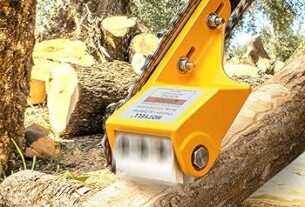Metal tools and nonporous supplies are commonly used in various industries, including healthcare, food processing, and manufacturing. These materials are durable, resistant to wear and tear, and easy to clean. However, they can also harbor harmful microorganisms, such as bacteria and viruses, that can cause infections and diseases.
To prevent the spread of infectious agents, it is essential to disinfect metal tools and nonporous supplies regularly. In this article, we will discuss why disinfection is crucial, how to disinfect metal tools and nonporous supplies effectively, and which products to use for disinfection.
Why Disinfecting Metal Tools and Nonporous Supplies Is Crucial
As mentioned earlier, metal tools and nonporous supplies can host a wide range of microorganisms that pose a threat to human health. These include bacteria such as Staphylococcus aureus (MRSA), Escherichia coli (E. coli), Salmonella spp., Listeria monocytogenes (Listeria), and Clostridium difficile (C. diff). Viruses such as hepatitis B virus (HBV) and human immunodeficiency virus (HIV) can also survive on these surfaces for extended periods.
When these pathogens come into contact with humans through contaminated metal tools or nonporous supplies, they can cause infections ranging from mild skin irritations to severe respiratory illnesses or even death. Therefore, disinfection of these surfaces is critical in preventing the spread of infectious diseases.
How to Disinfect Metal Tools and Nonporous Supplies Effectively
Disinfection involves the use of chemical agents that kill or eliminate pathogenic microorganisms on surfaces. The effectiveness of disinfection depends on several factors such as the type of surface material, the concentration of the disinfectant solution used, the contact time required for disinfection, and the method of application.
The following are steps to disinfect metal tools and nonporous supplies effectively:
Step 1: Clean the Surface
Before disinfection, it is essential to clean the surface using soap and water or a detergent solution. This removes dirt, grime, and organic matter that can shield microorganisms from the disinfectant. Use a soft cloth or sponge to avoid scratching the surface.
Step 2: Choose the Right Disinfectant
There are several types of disinfectants available in the market, including chlorine-based products, quaternary ammonium compounds (QACs), hydrogen peroxide-based solutions, and alcohol-based formulas. Choose a product that is suitable for the type of surface material you want to disinfect. Check the label instructions for dilution rates and contact time required.
Step 3: Apply the Disinfectant
Wear gloves before applying the disinfectant solution to protect your skin from chemical exposure. Spray or apply the solution onto the surface using a clean cloth or sprayer. Ensure that the entire area is covered with the solution.
Step 4: Allow Contact Time
The effectiveness of disinfection depends on the contact time between the surface and disinfectant. Check the label instructions for recommended contact time. Some disinfectants require longer contact time than others. Do not wipe off the solution before it dries naturally.
Step 5: Rinse and Dry
After disinfection, rinse the surface thoroughly with clean water to remove any residual chemicals. Dry with a clean towel or allow it to air dry.
Which Products to Use for Disinfection
Choosing the right product for disinfection is crucial in achieving effective results. Here are some examples of commonly used products for disinfecting metal tools and nonporous supplies:
Chlorine-based products: Chlorine bleach is an effective disinfectant for hard surfaces such as stainless steel, plastics, and ceramics. It is easy to use and affordable. However, it can corrode metal surfaces and emit a strong odor.
Quaternary ammonium compounds (QACs): QACs are widely used in healthcare settings for disinfecting medical equipment, floors, and walls. They are effective against a broad range of microorganisms and have a low toxicity profile. However, they can cause skin irritation and do not work well in the presence of organic matter.
Hydrogen peroxide-based solutions: Hydrogen peroxide is a powerful oxidizing agent that can eliminate bacteria, viruses, and fungi on surfaces. It is safe to use and does not leave any residue. However, it can discolor some surfaces such as fabrics and carpets.
Alcohol-based formulas: Alcohol-based disinfectants are effective against most bacteria and viruses on surfaces but do not work well against spores or fungi. They evaporate quickly and do not require rinsing but can be flammable.
Conclusion
Disinfection of metal tools and nonporous supplies is crucial in preventing the spread of infectious diseases. The process involves cleaning the surface, choosing the right disinfectant product, applying it correctly, allowing contact time, rinsing off residual chemicals, and drying the surface thoroughly.
Using appropriate disinfectant products is vital in achieving effective results while protecting the environment and human health. Always follow label instructions for dilution rates, contact time required, personal protective equipment (PPE) needed, and disposal of waste materials.
By following these guidelines, you can ensure that your workplace or home environment remains free from harmful microorganisms that threaten human health.
References:
Centers for Disease Control and Prevention (CDC). (2021). Disinfection & Sterilization Guidelines: Guideline for Disinfection and Sterilization in Healthcare Facilities. Retrieved from https://www.cdc.gov/infectioncontrol/guidelines/disinfection/index.html
Environmental Protection Agency (EPA). (2021). List N: Disinfectants for Coronavirus (COVID-19). Retrieved from https://www.epa.gov/pesticide-registration/list-n-disinfectants-coronavirus-covid-19
World Health Organization (WHO). (2016). Guide to Local Production: WHO-recommended Handrub Formulations. Retrieved from https://www.who.int/gpsc/5may/Guide_to_Local_Production.pdf




